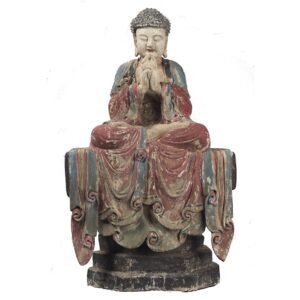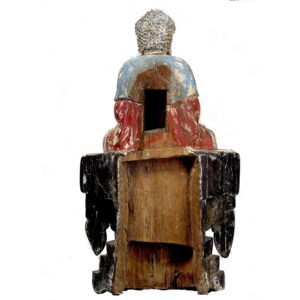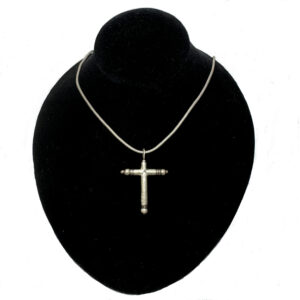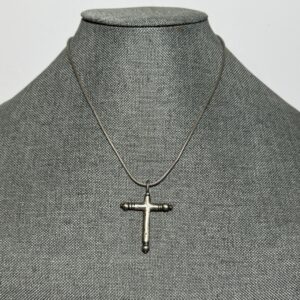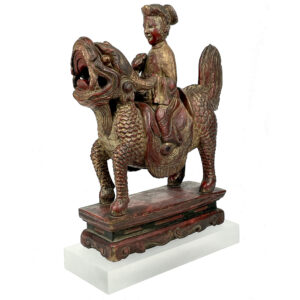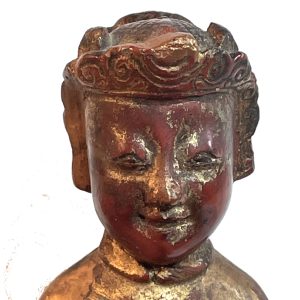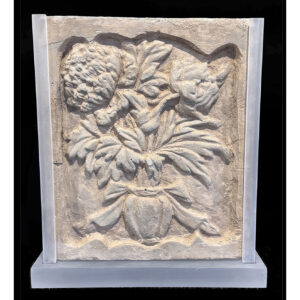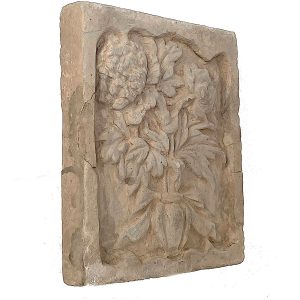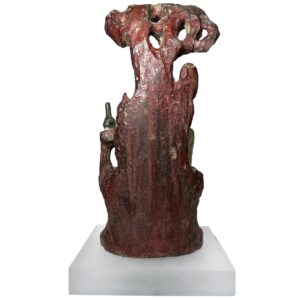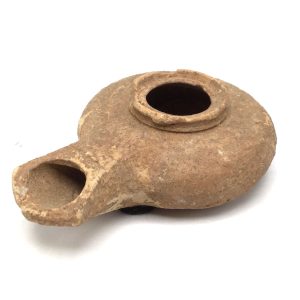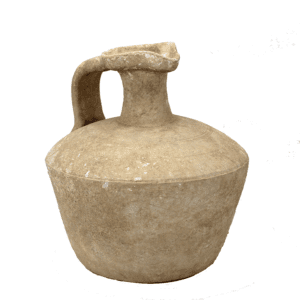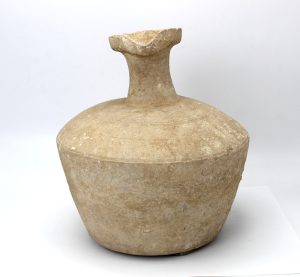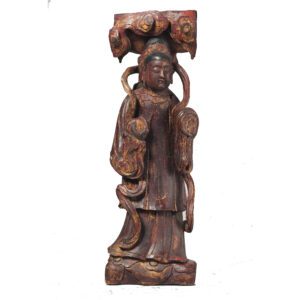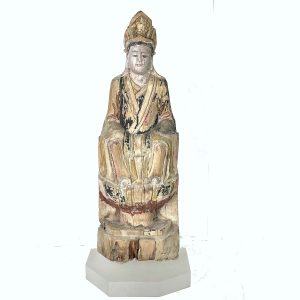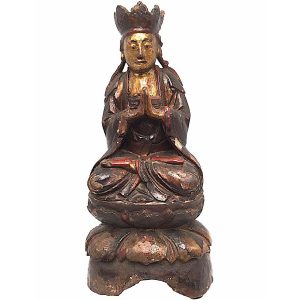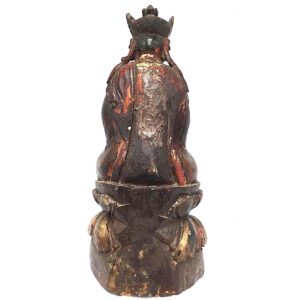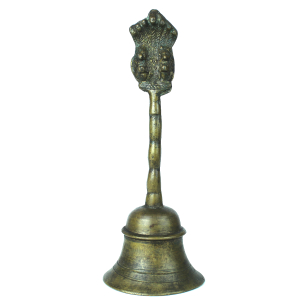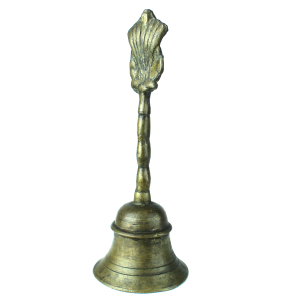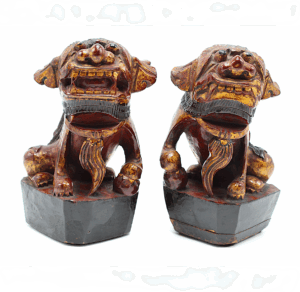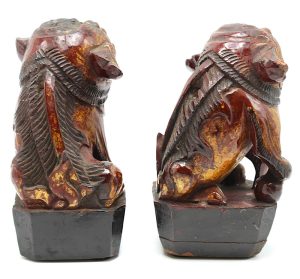Showing 181–192 of 248 results
-
Sale!


$9,500.00 Original price was: $9,500.00.$7,900.00Current price is: $7,900.00.
H: 42″ W: 25″ D: 12″ | CALL 213-568-3030 OR EMAIL [email protected] FOR SHIPPING
Rare wood carved Ming Vairocana Buddha, the central figure of the Five Wisdom Buddhas. He sits in unction associated with Northern esoteric Buddhist Vajrayana/Tantric/ sects. This pose reflects the concept of consecration, symbolizes wisdom, perfection and connection to the divine.
-
Sale!


$125.00 Original price was: $125.00.$85.00Current price is: $85.00.
Chain Length: 14 ” Cross: 1.75″ | FREE SHIPPING WITHIN CONTINENTAL U.S.
This lovely Bolivian silver cross ending with rounded ends and three incised bars has a soft patina from centuries of wear. The old woven chain has an updated clasp.
-
Sale!


$895.00 Original price was: $895.00.$625.00Current price is: $625.00.
H: 9.5” W: 2.25” D: 6.5” | FREE SHIPPING within Continental U.S.!
This remarkable figurine is Guanyin on her mythical mount, the Hǒu, guardian master of the universe and model for righteousness and morality who symbolizes bringing forth peace and prosperity.The round orb in its mouth representing a pearl can be rubbed for good luck. It is one of our most unique and favorite Buddhist statues, mounted on a frosted Acrylic stand.
-


$995.00
H: 11” W: 9.5” D: 1.65” | FREE SHIPPING
This earthenware brick tile bordered with a deep scalloped frame depicts a vase with a bouquet of propitious flowers: a chrysanthemum and a peony wrapped with an elegant ribbon. Tiles like this were made to decorate the large numbers of buildings created during the prosperous Song dynasty and to adorn tombs. This elegant brick is in good condition for its age with expected chips and cracks, some restoration of background and a re-glued frame break on each side. It has earth adherents from its burial in a tomb.
-


$620.00
This Nanhai Guanyin (Guanyin of the South Sea) sits in her cave on Putuo island in the South China Sea with most of her traditional features. She is portrayed as White Hooded or Clad Guanyin with her hair in a bun covered with a short hood seated in royal ease (lalitsana) with her right hand…
-


$155.00
Early Christianity oil lamps were also seen as a symbol of light and a manifestations of the presence of the divine.
-
Sale!


$775.00 Original price was: $775.00.$650.00Current price is: $650.00.
H: 4.5” W: 3” D: 2.75” | SOLD
This Roman ceramic flagon is a uniquely shaped vessel used to store and pour potable liquids. A crème slip carinated jug with a high profile and a trefoil pouring spout, it has a strap handle attached from the carinated edge to just below the rim for easy handling. Roman coarse wars like this were use for liquids and to make offerings to household deities.
-
Sale!

$3,200.00 Original price was: $3,200.00.$2,600.00Current price is: $2,600.00.
H: 31″ W: 11″ D: 6 1/2″| CALL 213-568-3030 OR EMAIL [email protected] FOR SHIPPING.
Exquisite carved Taoist Queen Mother of the West Jade Maiden attendant who carries a peach of immortality grown in the Queen’s Garden. These fruits blossom every 3,000 years and are served at her famous banquet in the Western Paradise.
-


$1,375.00
SOLD H: 23.25″ W: 9.25″ D: 6.25″
This Guanyin image was probably one of a pair of images along with the Taoist Queen Mother of the West (16206A-WACK) placed together on a community, local temple or home altar. Created by the same local artisan, they are provincial rather than imperial style having a humble, unadorned and simple rendering, seated on backless thrones, hands covered by a ritual cloth, uncharacteristic of Guanyin but common for Taoist goddesses. Both wear layered robes and a high pointed crown – the Queen Mother’s centered by a phoenix and Guanyin’s by a flower surrounded by symbolic aureole of radiating light. Both have soft blissful smiles with eyes cast slightly downwards to engage their devotees. Initially covered in bright polychrome colors, there are traces of surviving red, yellow, green, brown and black.
-
Sale!


$475.00 Original price was: $475.00.$350.00Current price is: $350.00.
H: 11.6 ” W: 5.3 ” D: 4.25 ” | FREE SHIPPING WITHIN CONTINENTAL U.S.
This provincial Guanyin made for a home altar sits in anjali mudra. Portrayed as humble, approachable, she wears a 5-lobed diadem, hair in a chignon with braids and modest robe seated on a waisted lotus throne with stacked lotuses.
-
Sale!


$295.00 Original price was: $295.00.$275.00Current price is: $275.00.
H: 10” Dia: 3.75” | FREE SHIPPING within Continental U.S.
Hindu prayer bell used in a temple or home altar for daily puja rituals. Topped by a pair of Garudas and sheltered by Nagas who are natural enemies, but when represented together symbolize peace and serenity of the prayer bell sounds.
-
Sale!


$395.00 Original price was: $395.00.$350.00Current price is: $350.00.
H: 5.75″ W: 3.25″ D: 2.75″ | SOLD
Each of this whimsical gold and red-burgundy lacquered pair of male fu lions sits erect on a high pedestal heads thrown back with flaring ears, bulging eyes, decorative stylized manes and a small bushy tail. Their spirituality is displayed by the pair silently emitting the blessed mantra “aum”: the open mouthed lion forming an “au,” and the other completing it with a closed mouth to form “mmm.” The workmanship on these pieces is masterful, although rustic and provincial, and they are rare with their Buddhist symbolism and because most pairs of fu lions pairs were lost during China’s modernization.
End of content
End of content

